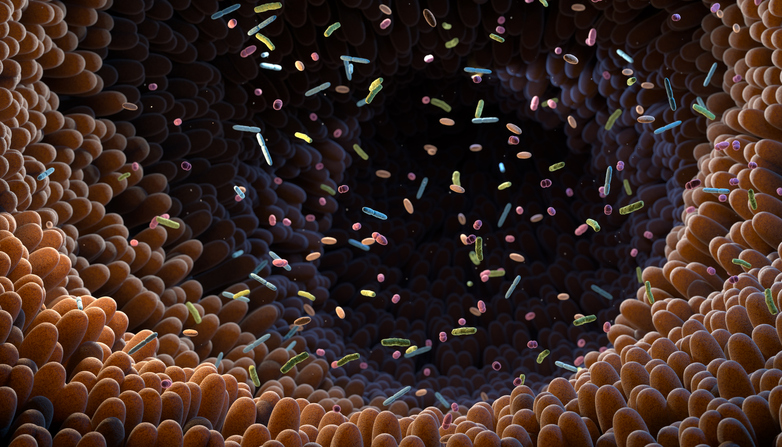After stem cell transplantation, donated immune cells sometimes lead to graft versus host disease (GvHD). Now researchers at the Technical University of Munich (TUM) and the Universitätsklinikum Regensburg (UKR) report that GvHD is much less common when certain microbes are present in the gut. In the future, it may be possible to deliberately bring about this protective composition of the microbiome.
Their study “Bacteria and Bacteriophage Consortia are Associated with Protective Intestinal Metabolites in Patients Receiving Stem Cell Transplantation” appears in Nature Cancer.
It has been known for some time that microbes in the gut play a role in determining whether GvHD occurs. A team working with Erik Thiele Orberg, PhD, who heads a research group at the clinic and polyclinic for internal medicine III at TUM, Ernst Holler, PhD, senior professor of allogenic stem cell transplantation at UKR, and Hendrik Poeck, PhD, at UKR’s clinic and polyclinic for internal medicine, describes in Nature Cancer how the gut microbiome must be composed to provide protection.

“The microbiome is a predictor of clinical outcome in patients receiving allogeneic hematopoietic stem cell transplantation (allo-SCT). Microbiota-derived metabolites can modulate these outcomes. How bacteria, fungi and viruses contribute to the production of intestinal metabolites is still unclear. We combined amplicon sequencing, viral metagenomics, and targeted metabolomics from stool samples of patients receiving allo-SCT (n = 78) and uncovered a microbiome signature of Lachnospiraceae and Oscillospiraceae and their associated bacteriophages. correlating with the production of immunomodulatory metabolites (IMMs),” write the investigators.
“Moreover, we established the IMM risk index (IMM-RI), which was associated with improved survival and reduced relapse. A high abundance of short-chain fatty acid-biosynthesis pathways, specifically butyric acid via butyryl-coenzyme A (CoA): acetate CoA-transferase (BCoAT, which catalyzes EC 2.8.3.8) was detected in IMM-RI low-risk patients, and virome genome assembly identified two bacteriophages encoding BCoAT as an auxiliary metabolic gene. In conclusion, our study identifies a microbiome signature associated with protective IMMs and provides a rationale for considering metabolite-producing consortia and metabolite formulations as microbiome-based therapies.”
Seventy-eight patients observed
The researchers studied stool samples from 78 patients at the two university clinics and tracked them over two years following stem cell transplantation. They used the results to develop a risk index indicating the probability of a rejection reaction. “Instead of counting bacteria, we measured the quantities of certain metabolites produced by the microbes,” says Thiele Orberg.
These immuno-modulatory microbial metabolites (IMMs) influence the immune system and the body’s regenerative capacity. “It is remarkable that a positive prognosis does not depend only on IMMs from bacteria,” says Elisabeth Meedt, MD, a physician at UKR and co-first author of the article. “We demonstrated that certain viruses in the gut–the bacteriophages–also play a role. This alone offers an impressive insight into the complex world of our gut microbiome.”
“Patients with a low IMM risk index had a higher chance of survival, showed fewer graft vs. host reactions, and experienced fewer relapses,” adds Poeck, noting that the metabolites are formed mainly by bacteria from the families Lachnospiraceae and Oscillospiraceae combination with the bacteriophages. The researchers at TUM and UKR next want to predict and actively improve patients’ chances at a cure.
“By precisely controlling the composition of fecal microbiota transplants, the gut could be colonized with specific consortia of bacteria and bacteriophages,” explains Hendrik Poeck. “In the coming years, we want to find out whether we can use this approach to prevent graft vs. host reactions as well as relapses.”
Initial experiments with mice reportedly have been successful. As a result, the procedure could now be tested in clinical trials with human patients, according to the scientists.



